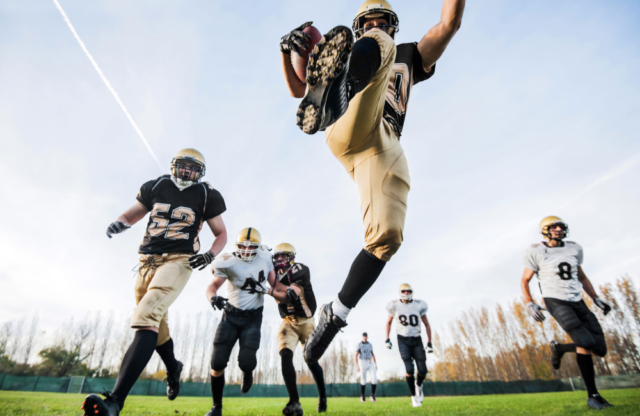The National Collegiate Athletic Association’s (NCAA) ongoing legal battles over Name, Image and Likeness (NIL) rights have resulted in a major settlement nearing $2.8 billion. This deal, aimed at compensating student-athletes and restructuring revenue-sharing models, has widespread effects. While athletic programs, especially smaller universities, wrestle with how to manage these new financial obligations, fans will also feel the impact in ways they may not have anticipated.
Settlement Updates
The settlement involves the NCAA and five major conferences–Big Ten, Big 12, ACC, Pac-12 and SEC–agreeing to pay billions in damages to current and former college athletes who were denied NIL opportunities. The landmark case not only compensates athletes but also creates a new revenue-sharing system, allowing schools to share a portion of their athletic revenue with players. The settlement, however, hit a roadblock when U.S. District Judge Claudia Wilken expressed concerns over regulating third-party NIL payments, particularly those from booster-funded collectives. The next hearing is scheduled for September 26, 2024, where attorneys will present revisions to address these concerns.
The Settlement’s Impact on Athletic Programs
The settlement allows schools to share up to $22 million annually with their athletes, introducing a new financial reality for athletic programs. For smaller universities, this poses a significant challenge. Many schools outside of the Power Five conferences already operate on tight budgets, and the added cost of compensating athletes could force tough decisions. These institutions may have to reduce scholarships, cut certain sports, or heavily rely on fundraising efforts just to remain competitive.
Athletic directors at these smaller programs face an additional layer of complexity in ensuring compliance with Title IX, which mandates equal treatment for men’s and women’s sports. Any financial adjustments made for male athletes must be mirrored for female athletes, adding further strain to already stretched budgets. Directors will need to navigate these new rules carefully while maintaining integrity and competitiveness.
Governors from states like South Dakota, Montana, and Idaho have already raised concerns, urging the NCAA to reconsider the settlement’s impact on smaller schools. These institutions could face substantial financial strain, with costs potentially reaching hundreds of thousands of dollars annually. The situation becomes even more challenging as boosters and NIL collectives, more common at larger schools, are expected to play an increasing role in athlete compensation. If these pressures aren’t addressed, many smaller programs may be forced to reduce opportunities for student-athletes by cutting sports or limiting scholarships.
How the Settlement Affects Fans
The settlement impacts more than just athletes and universities—it affects fans too. Recently, Tennessee announced a 10% ‘talent fee‘ on all sports tickets, along with a 4.5% increase in football ticket prices to help fund athlete compensation under the new revenue-sharing agreement starting in 2025. Athletic director Danny White emphasized the importance of transparency, noting that these fees are essential for maintaining the university’s competitiveness and will directly support athlete compensation as well as the university’s broader goals in college athletics. As more schools adopt similar strategies, fans nationwide may see ticket prices rise in the coming years.
For fans at schools adopting this revenue-sharing model, ticket prices are expected to rise significantly. At Tennessee, the cheapest football season ticket in 2025—including the talent fee, taxes and required donations—will cost over $450, while student ticket prices will rise from $10 to $25 per game.
Implications for Athletic Directors
Athletic directors at universities of all sizes face increasing pressure to find creative ways to fund rising NIL costs, and this challenge is expected to grow. Schools like Tennessee have already begun turning to their fan bases by raising ticket prices to help cover these expenses. As programs seek additional revenue streams, athletic departments must also navigate the complexities of fairly distributing this new income to athletes while avoiding legal issues. For smaller programs, the financial burden is even greater, with some potentially needing to ramp up fundraising efforts, secure more sponsorships, or even cut sports to remain operational. These decisions may impact student-athlete opportunities, the fan experience, and the long-term sustainability of college athletic programs.
Athletic directors will also face significant operational shifts as paying athletes becomes a requirement. These new responsibilities will force ADs to rethink how they allocate scholarships, manage rosters, and foster relationships with boosters. Title IX compliance, which requires equal scholarship opportunities for men and women, adds financial pressure to already tight budgets, as schools must balance male and female athlete compensation equitably. In addition, the original settlement terms require NIL deals worth over $600 to report to a centralized database, further complicating recruitment and athlete retention. Directors will need to carefully monitor these changes to ensure compliance and avoid legal issues.
The NCAA settlement represents a pivotal moment in college sports, shifting the financial landscape for universities, athletic programs, and fans alike. Athletic directors, particularly at smaller schools, must brace for increased financial strain and explore new strategies to maintain compliance and competitiveness. Meanwhile, fans may find themselves paying more to attend games, as programs raise funds to cover the costs of this new era of college athletics. The changes ahead will reshape not only how universities manage their athletic programs but also the relationship between fans and their favorite teams.




